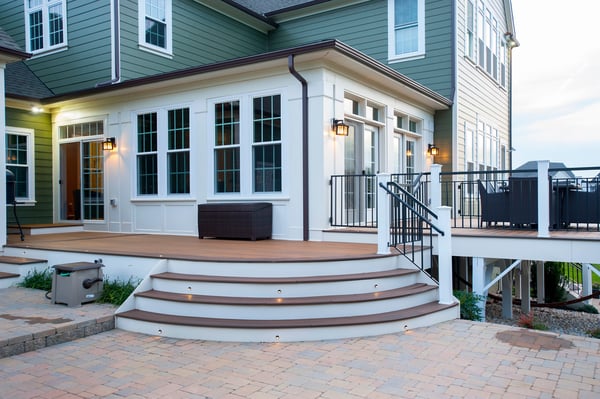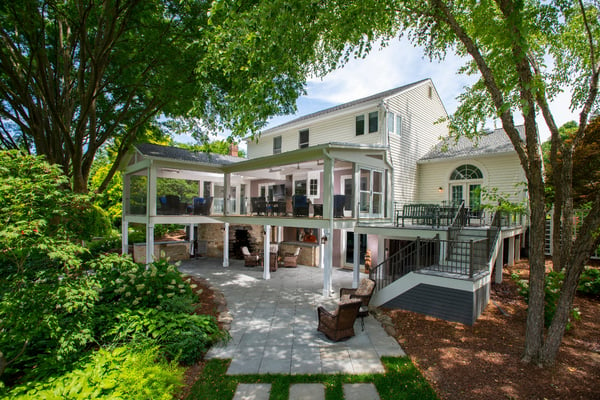
How Adding a Stop Point Can Save You Thousands on Your Screen Porch
Started researching additions to your exterior living space? Then you’re probably aware they don’t come with a small price tag. Yes, they offer tons of benefits, adding great resale value, expanding the usable square footage of the home, and increasing your overall enjoyment of the space. But the fact remains. A screened-in porch is a big investment. The good news? Adding a stop point is one major way to offset some of that cost.
Phasing Your Project with Smart Planning
Many factors affect the cost of a screened-in porch project, but as of 2020, the average cost for a Design Builders project was $66,000. That’s obviously a big investment, and it’s a big reason we talk so much to our customers about phasing their projects or adding stopping points.
What exactly does this mean? Phasing your project is a way of doing it in small installments so you can stretch the overall cost over a longer, more manageable period of time. The end of each completed installment is a “stop point.”
How does that look in real life? Say you want a high-end, custom screen porch with full electric, heaters, and a finished ceiling. That comes with a cost of about $65,000. If that’s too high for an up-front expense, you can build the majority of the screen porch but leave off heaters, a complex electric system, and a finished ceiling. By opting for the most basic electric system, having an open-rafter ceiling, and installing a simple ceiling fan with a light, you can enjoy a functional screen porch for about $50,000.

This is a great pausing point (or “stop point”) for your project, delaying nearly $15,000 of work. Then, down the line, after you’ve had time to build up funds for the rest of the project, you can add that $5,000 worth of electric work, $5,000 worth of heaters, and $5,000 worth of ceiling finishing.
Why Is Preplanning So Important?
It’s critical you go into your design project with an idea of what you ultimately want. Often, it’s completely possible to add these phases and stop points that help you get your project to that end state. Yes, it’s a longer time frame before you get every aspect of your dream project, but it’s also a more reasonable payment schedule.
You just need to talk to your design and build firm before work commences. Then you and the design team can make a plan for how best to build your project in phases that make sense and work for your budget.
This planning not only allows you to defer expected costs, but it can also save you lots of money in unexpected costs.
Say, for example, you build a screen porch and intend to add Infratech heaters at some point. If you tell your design and build firm this, they can rough in the wiring for those heaters when everything is already open and exposed for the initial build phase. Then, when you’re ready, it’s a simple process to just add the heaters.
If you don’t tell them about your plan to eventually add heaters, it’s going to mean ripping open walls and doing lots of costly drywall repair in order to add that necessary wiring and circuitry after the fact. (For a full understanding of just how complicated and expensive it is to add Infratech heaters to a screen porch after it’s been built, read our blog all about it.)
Interested in Other Ways to Save Money When Building Your Screen Porch?
First, get a baseline idea of what kind of ROI to expect from a screened-in porch project. Then read this list of seven tips for maximizing the return on that project.
Questions about how best to plan for your new screen porch project? Feel free to reach out to us. Design Builders is an experienced design and build firm working in the Northern Virginia and Maryland markets, and we’d love to help!


